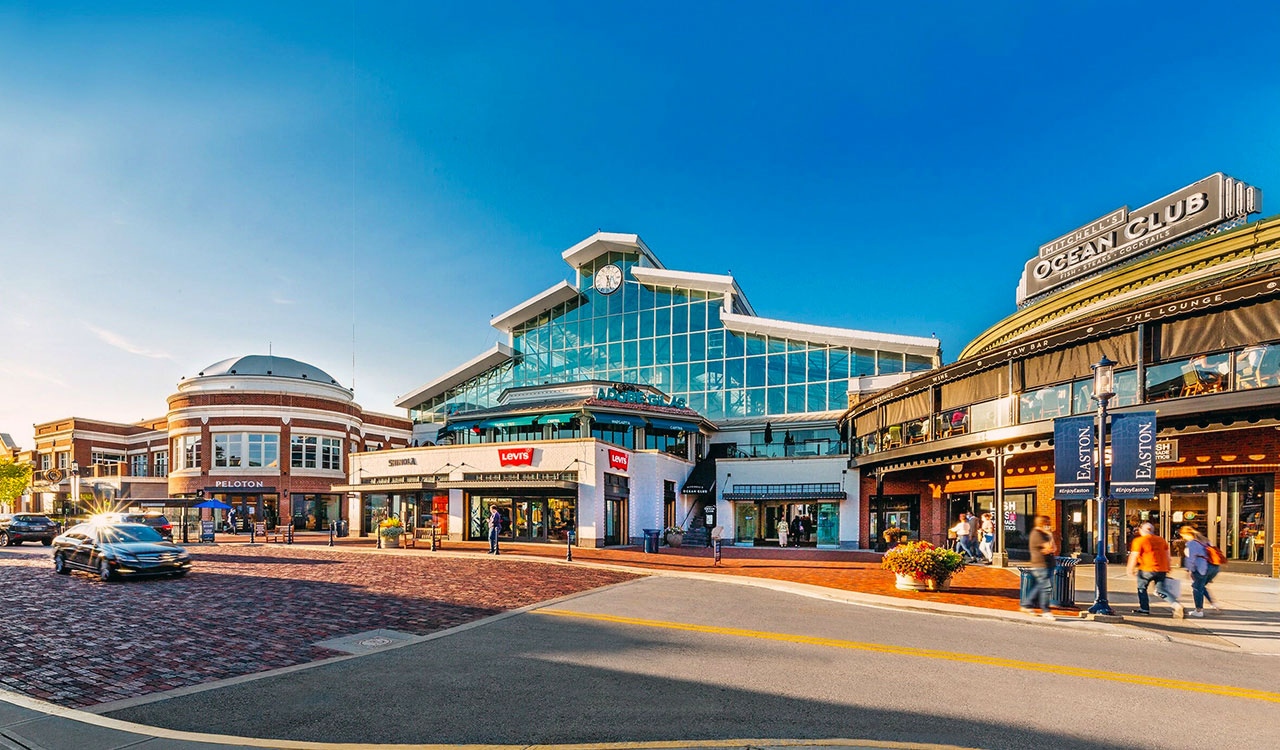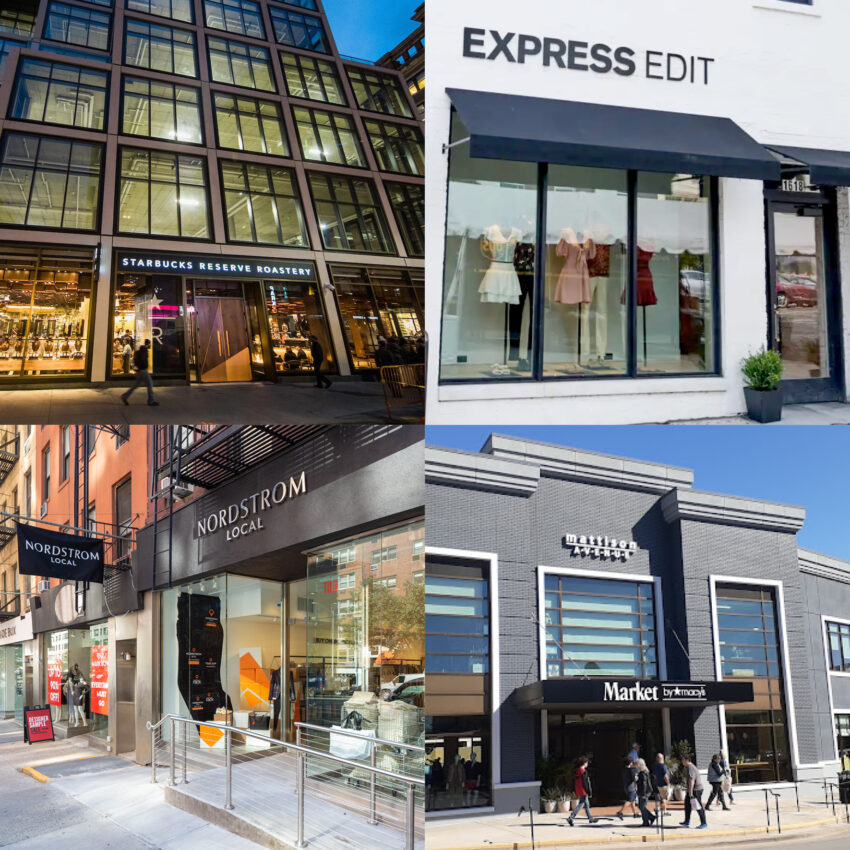Columbus, Ohio is the 32nd largest metro area in the U.S. ranked by population and known, primarily, for its Ohio State NCAA Big 10 football team. But according to one of Placer.ai’s geolocation benchmarks, Columbus is also home to America’s #1 trafficked open-air shopping center, Easton Town Center. Easton thrives despite these contradictions: It’s an outdoor mall in the wintry Midwest and a New Urbanist development nestled in the suburbs. It counts Gucci, Tiffany, Louis Vuitton, Apple and RH Gallery as thriving tenants and paradoxically, Macy’s outperforms Nordstrom. The lesson here? Don’t make any assumptions. The true insight is understanding why people buy.”
Decline and Fall
To put Easton’s success into perspective, let’s review some history. U.S. malls were once a huge driver of the retail economy, numbering around 1,200 at their peak. Their ascent began in the 1970s, fueled by the rapid growth of highways, the suburbs and the middle class. And then what happened? The decline and fall of the American mall are evident in the sad, sorry deserted shopping centers that were once community and retail hubs. Today there are roughly 800 viable retail shopping malls and large-scale lifestyle centers remaining, and the numbers continue to fall.
The reasons are many, as readers of TRR know. As a refresher, here are a few key factors that drove malls into the ground, some literally.
- Ecommerce and the smartphone created increasingly compelling alternatives to in-person mall shopping, especially for younger generations infusing them with different shopping habits and preferences.
- The middle class, once the core economic engine of the mall, is declining. The share of adults living in middle class households fell from 61 percent in 1971 to 50 percent in 2021, according to Pew Research Center’s analysis of government data.
- A shift in income distribution spawned the growth of discount, outlet, dollar and off-price sectors that became more compelling to the large population of needs-based, utilitarian shoppers.
- The trend in discretionary spending is shifting from products to services and experiences.
Visionary Icon and Iconoclast
So, what is a mall owner to do? We went to a grand master who works at the center of mall development and culture. Yaromir Steiner, born in Turkey and educated in France, is the master planner of Easton Town Center and helped develop the CocoWalk open-air shopping mall in Miami. He has a studied interest in urban planning and design and regularly teaches a continuing education seminar at Harvard’s School of Design.
His company, Steiner + Associates, has developed a total of 7 million square feet of mixed-use real estate in Florida, Ohio, Wisconsin, Missouri, and Virginia. These projects, according to one source, “represent some of the most iconic, innovative and influential retail and mixed-use environments in the United States.”
Steiner has a good grasp of systems thinking and viewing problems holistically. He’s the first to admit that America’s malls are at risk and offers a lucid analysis of the problems plus proposes some novel solutions.
Origins
Steiner adds two other factors eroding the mall economy to our list. First, the enclosed mall has fallen out of favor with consumers as an experiential shopping environment. That formulaic design – a windowless behemoth surrounded by heartbreaking acres of car parking asphalt – started with the Southdale Center in Edina, Minnesota, which opened in 1956. It was a stunning innovation at the time.
However, architect Victor Gruen’s original vision was to mimic the pedestrian arcades of his native Europe, with their mix of retail, residential, office, restaurants, bars, entertainment, and parks. But the Dayton Company, the department store chain that financed the project, had another idea. It wanted its department stores to be the main attractions, so it flipped the model with indoor streetscapes, placing parking out of sight around the outside perimeter. Entry was available primarily through the star of the show – the department stores. It was exclusively shopping and the other retailers along the corridors had no exterior signs. There were few, if any, restaurants and cinemas.
As malls evolved, they played a central role in customer acquisition for retail brands, delivering remarkable experiences, and handling returns and other post-sale issues. Fast forward two+ decades and the New Urbanism movement gained currency in the 1980s, promoting open-air, pedestrian-friendly, mixed-use projects. In a back-to-the-future moment, Steiner notes the shift was more along the lines of Gruen’s original vision. Ten years later, open-air malls, or lifestyle/experience centers, had in fact become the predominant new mall model.
Mall Understory
The second reason Steiner cites for mall erosion is more controversial: REIT ownership. He notes that malls elsewhere in the world are resilient and thriving unlike the vast majority of failed and failing malls in the U.S. There were 1000+ REIT-owned malls in 2005, but now, the number is down to around 400. Why? Steiner explains that REITs are required by law to distribute at least 90 percent of their taxable income each year to shareholders, obviously limiting how much they can reinvest into the properties.
This model works well for utilitarian “needs-based” mall shopping, say, a Walmart or supermarket anchor where demand and capex are relatively stable. But for trend-driven “wants-based” shopping, where properties need to continually adapt to changing consumer fashion and lifestyle preferences, the REIT model can be a death knell.
Steiner Solutions
- Ramp up the experience. Steiner’s original vision for Easton was to deliver experiences. This was informed by his childhood growing up in Istanbul and France where marketplaces and bazaars were embedded into street and consumer culture. Digital-first brands such as Purple, Marine Layer, Untuckit, Warby Parker, and Allbirds have all chosen to open stores at Easton. As Steiner says, “If Easton did not exist, where else would they go?” The Center is inspired by the eclectic mix of the Grand Bazaar of Istanbul, built in the 1500s. Proof of concept? Easton was recognized by Chain Store Age as the #1 consumer shopping experience for three years straight (2020-22).
- Create a new department store model. At the crux of today’s Grand Bazaars, Steiner advocates for a new iteration of the department store model with a focus on showcasing primarily third-party brands. He was a great admirer of Ron Johnson’s vision for JCPenney. Logically, he says, it makes no sense for some brands to design, build, operate and pay rent on their own stores when they could operate under the broader tent pole with dedicated space, sales, and visual support enhanced by upgraded food and beverage brands and other lifestyle-based experiences. Following that holistic vision, imagine a Levi’s denim bar with dedicated service and an interactive Lego department for the kids to keep them safe and busy.
Bridging Theory to Practice
Steiner’s two ideas aren’t just idle speculation. The Hunt family is currently putting together a fund in the $300-$400 million range to acquire failed malls and then reposition them into mixed used properties. “Demolish the buildings, maybe get a department store, put in some specialty retailers, restaurants and offices. Make Easton’s out of them,” says Steiner. Likewise, he foresees cities and townships leading efforts to repurpose depressed/underleveraged commercial districts and rebuilding them into serious traffic-driving experience centers.
The Future of Easton
Taking a step back, in 1999, Steiner teamed up with Limited Brands and The Georgetown Company to develop Easton’s first phase and then the second phase two years later. Today Easton is 1.8 million square feet, featuring 300 stores, 48 restaurants, cinemas, offices and residences. While Steiner can’t stop philosophizing about retail and urban development, he continues to work tirelessly to ensure the future of his own Easton development.
Based on his European sensibility, he’s convinced that environmental sustainability will eventually become second nature to Americans. In the meantime, he’s focused on converting the entire Easton project to renewable energy and aims to implement more effective recycling and composting programs and donate more food from its restaurants to pantries.
Moreover, Steiner wants to see Easton Town Center become a true village. “We cannot be solely a commercial project. There must be art galleries. There should be dry cleaners, a childcare center, and senior living homes. We need to think more holistically about how people live their lives – what they want and need.”
He concludes, “We still have 150 unbuilt acres. I don’t know if I’ll be alive to see it, but 20 to 25 years from now, Easton could be transformed from a mall to a village. That’s my idea.”



